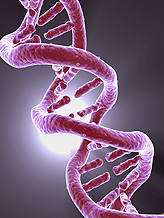Health secretary Aneurin Bevan opens Park Hospital in Manchester 1948 (image right). Find out more below
1948 - The NHS is born on July 5
When health secretary Aneurin Bevan opens Park Hospital in Manchester, it is the climax of a hugely ambitious plan to bring good healthcare to all. For the first time, hospitals, doctors, nurses, pharmacists, opticians and dentists are brought together under one umbrella organisation to provide services that are free for all at the point of delivery.
The central principles are clear: the health service will be available to all and financed entirely from taxation, which means that people pay into it according to their means.
1952 - charges of one shilling are introduced for prescriptions
Prescription charges of one shilling (5p) are introduced and a flat rate of £1 for ordinary dental treatment is also brought in on June 1 1952. Prescription charges are abolished in 1965 and prescriptions remain free until June 1968, when the charges are reintroduced.
Find out about today's prescription costs.
1953 - DNA structure revealed

On April 25, James D Watson and Francis Crick, two Cambridge University scientists, describe the structure of a chemical called deoxyribonucleic acid in Nature magazine.
DNA is the material that makes up genes, which pass hereditary characteristics from parent to child. Crick and Watson begin their article:
"We wish to suggest a structure for the salt of deoxyribonucleic acid (DNA). This structure has novel features which are of considerable biological interest."
Knowing the structure of DNA allowed the study of disease caused by defective genes.
1954 - smoking and cancer link established
In the 1940s, the British scientist Sir Richard Doll begins research into lung cancer after incidences of the disease rise alarmingly. He studies lung cancer patients in 20 London hospitals and expects to reveal that the cause was fumes from coal fires, car fumes or Tarmac. His findings surprise him and he publishes a study in the British Medical Journal, co-written with Sir Austin Bradford Hill, warning that smokers are far more likely than non-smokers to die of lung cancer. Doll gives up smoking two-thirds of the way through his study and lives to be 92.
1954 - daily hospital visits for children introduced
Until now, children in hospitals are often allowed to see their parents for an hour on Saturdays and Sundays only and are frequently placed in adult wards, with little attempt to explain to them why they are there or what is going to happen.
Paediatricians Sir James Spence in Newcastle and Alan Moncriff at Great Ormond Street are making considerable steps to change this, demonstrating that such separation is traumatic for children. As a result, daily visiting is introduced gradually.
Learn about children in hospitals today.
1958 - polio and diphtheria vaccinations programme launched
One of the primary aims of the NHS is to promote good health, not simply to treat illness. The introduction of the polio and diphtheria vaccine is a key part of NHS plans. Before this programme, cases of polio could climb as high as 8,000 in epidemic years, with cases of diphtheria as high as 70,000, leading to 5,000 deaths.
This programme ensures everyone under the age of 15 is vaccinated and will lead to an immediate and dramatic reduction in cases of both diseases.